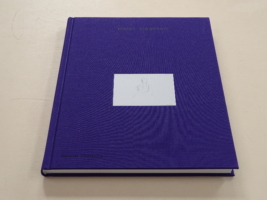
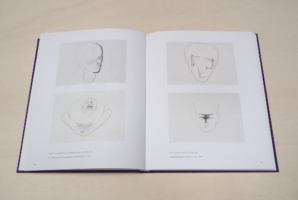
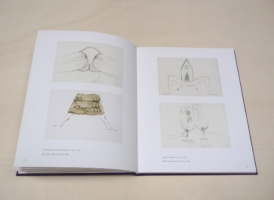
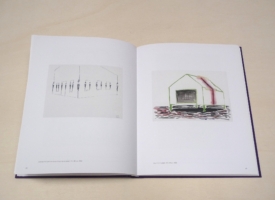
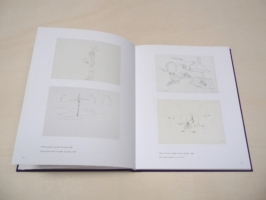
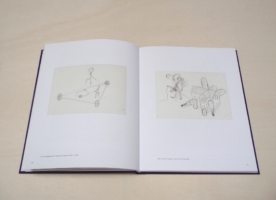
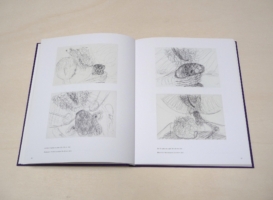
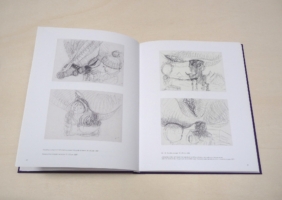
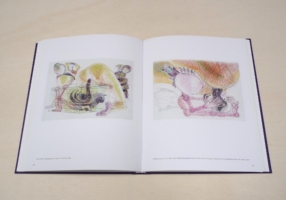
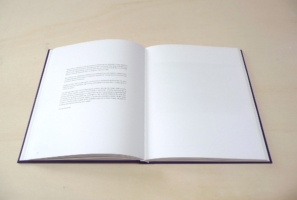
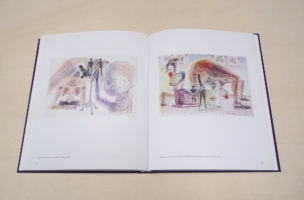
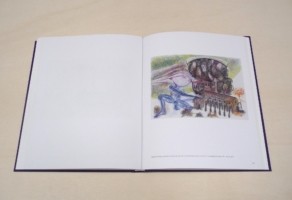
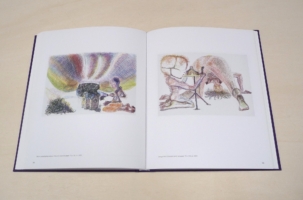
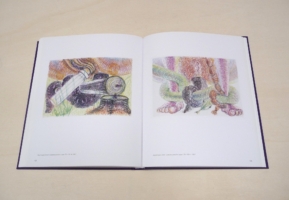
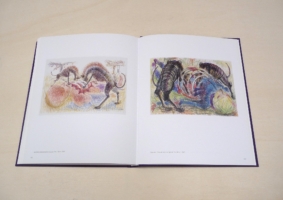
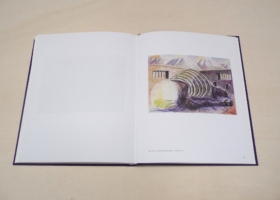
by Lorenzo Benedetti
Symbolic spaces and spaces that turn into symbols – in Slagboom’s drawings we find an analysis of the image in our contemporary culture, translated into dreamlike forests of metaphors, emblems, imaginary worlds. A vast quantity of elements, signs and symbols overwhelm the collective imagination with an excess of stimuli. As a result, his work seems to make us aware of a mythology of the absurd, inhabited by recurring symbols. At times these symbols appear to lure us into landscapes resembling labyrinths with no entrance or exit.
The lines of the drawings are complex and branching. The pencil strokes pass through the bodies like veins and arteries, like the life-blood of the depicted form. This energy is not just confined to the pencil strokes, but emerges from the matter, the intense expressiveness of the forms. The pencil stroke, synthetic but compact, remains individual in all its intensity, interwoven with the whole yet sharply delineated in its form – a form that does not really exist but is composed purely of lines, highlighting their precarious existence within an imaginary, absurd world. Often we see the dualism of a harsh symbolism that is depicted in the soft, warm colours that make up the form. An oxymoronic state of serene anguish, absurd normality, uneasy bliss.
Slagboom uses the oxymoron to show how seemingly irreconcilable contrasting elements are to be found in everyday life – as in Magritte’s later works, in which pastel colours were used to depict bucolic scenes with an emphasis on the absurd, or the Chapman brothers’ apocalyptic scenes translated into everyday contexts and vice versa.
The scenes in Slagboom’s work go beyond the traditional time dimension to take shelter in narratives that are not bound to any particular time. This brings them close to Borges’ mythology, which tackles themes such as the labyrinth, the mirror and the double, and in which reality is constantly dissolved within an imaginary, visionary world.
The transition from installation to drawing is a precise process that creates a parallel space – a space that describes a reality so unique and absurd that drawing appears to be the only technique capable of showing it.
Slagboom’s work often includes rooms, environments, buildings and scale models, symbols of places, symbols of buildings. Each scene, each situation he describes is located within a precise dimension.
His drawings often make use of a tautological dynamic, placing one image inside another to probe various realities in search of the innermost dimension. Drawing thus becomes a process of probing the psychology of contemporary society, from a personal angle filled with mythologies of the absurd and the real. Buildings are often a central feature of his work, and are often made of human excrement, whose usual cultural connotation is altered by the artist to give it a creative quality. Indeed, all his symbols appear to be used in ways that seek to challenge conventional meanings and values.